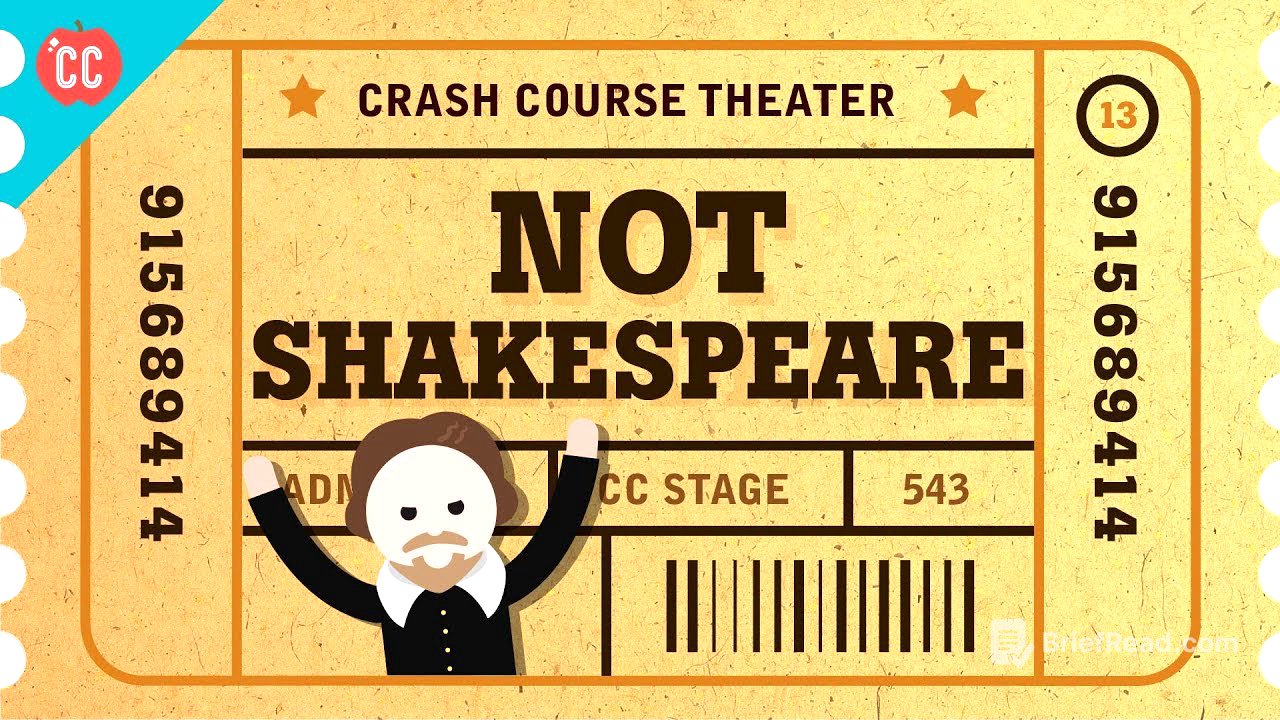TLDR;
This episode of Crash Course Theater explores the theater of Renaissance England, focusing on the historical context, the emergence of English playhouses, and notable early plays and playwrights, all while intentionally avoiding discussion of Shakespeare. It covers the delayed arrival of the Renaissance in England, the impact of Tudor rule on theater, early Renaissance plays, the development of permanent theaters, and the influence of the University Wits on dramatic writing.
- The Renaissance arrived late in England due to wars and instability.
- Tudor rulers influenced theater through patronage and censorship.
- Early plays were inspired by Roman comedies, morality plays, and farces.
- The first permanent theaters emerged outside London due to restrictions.
- The University Wits, including Marlowe and Kyd, shaped dramatic writing and influenced later playwrights.
Introduction to Renaissance English Theater [0:03]
The episode introduces the theater of Renaissance England, clarifying that the focus will be on the theatrical landscape before Shakespeare's prominence. It promises a discussion of the historical context, the English playhouse, and early plays and playwrights, setting the stage for an exploration of the era's dramatic arts independent of Shakespeare.
Historical Context of Renaissance in England [0:44]
The Renaissance arrived late in England, about 150 years after it began in Italy, primarily because England was involved in the Hundred Years’ War and the Wars of the Roses. Once the Tudors took the throne, stability increased, and humanism and the arts flourished. The Tudor monarchs, particularly Henry VII and Henry VIII, supported theater, with Henry VIII establishing the Office of the Revels to manage court entertainments. However, religious and political plays faced censorship, leading Elizabeth I to crack down on such content in 1558, effectively ending cycle plays and classifying actors as vagrants. To circumvent these restrictions, acting troupes aligned themselves with nobility, becoming licensed servants under names like The Lord Chamberlain’s Men.
Early English Renaissance Plays [2:38]
The earliest plays of the English Renaissance predate licensing and vagrancy laws. Two of the first comedies written in vernacular English were "Ralph Roister Doister" by Nicholas Udall, featuring a boastful character similar to the commedia dell-arte's Captain, and "Gammer Gurton’s Needle" by an unknown author, which relies on physical humor. "Cambises" by Thomas Preston, is an episodic play blending tragedy and comedy, reminiscent of morality and history plays. "The Tragedie of Gorboduc" by Thomas Norton and Thomas Sackville, influenced by Seneca, is the first tragedy on an English subject, written in blank verse and exploring themes of succession and rebellion.
Development of English Theaters [5:51]
Early English Renaissance plays were initially staged in gardens, banquet halls, inn yards, and schools due to the absence of permanent theaters. As acting became more professional and plays gained popularity, troupes began constructing permanent structures outside the City of London, where plays were outlawed due to fears of spreading the plague. The first theater was the poorly constructed Red Lion, built in 1567. A more successful venture was The Theatre, built in 1576 by James Burbage, which borrowed its design from inn yards and bear-baiting pits, featuring a three-level gallery and a thrust stage. The Theatre was associated with the Lord Admiral’s Men and later dismantled and moved across the river to become the Globe. In 1576, the first indoor, private theater, Blackfriars Theatre, appeared, offering a more expensive and sophisticated theatrical experience, initially featuring performances by companies of boys.
The University Wits [9:33]
The sophisticated plays for the indoor theaters were written by the University Wits, playwrights who attended Oxford or Cambridge. These playwrights, including Thomas Kyd, John Lyly, Robert Green, and Christopher Marlowe, improved upon early dramas, making them more lively and poetic, and paving the way for Shakespeare. Thomas Kyd is known for "The Spanish Tragedy," which influenced revenge tragedy. John Lyly wrote charming pastorals, and Robert Green is known for "Friar Bacon and Friar Bungay." Christopher "Kit" Marlowe, who died young, wrote intense plays in blank verse, featuring ambitious characters and exploring themes of overreaching, as seen in "Doctor Faustus." Marlowe's work significantly influenced Shakespeare.









